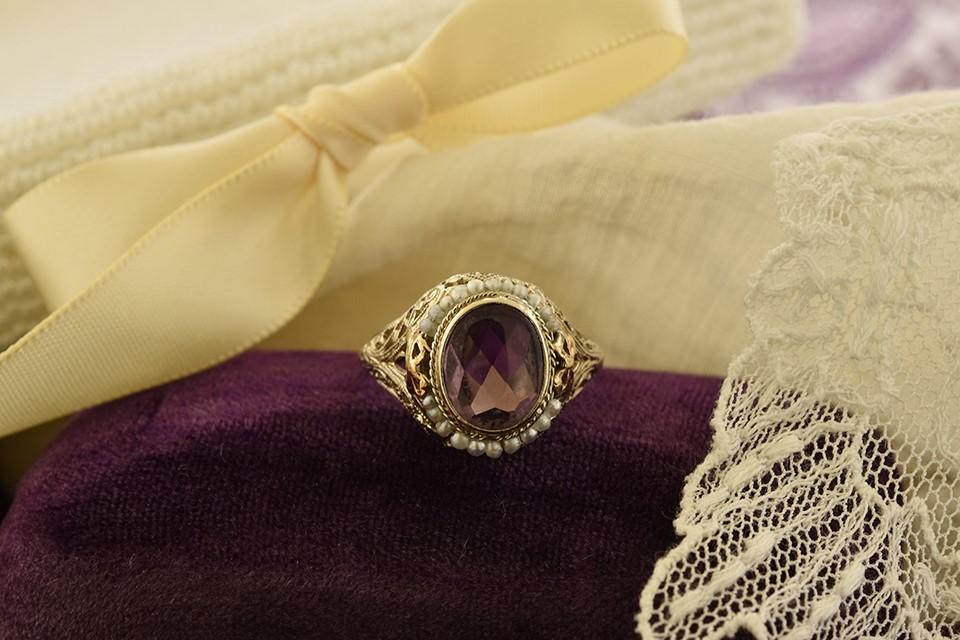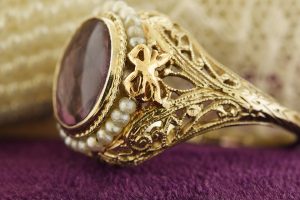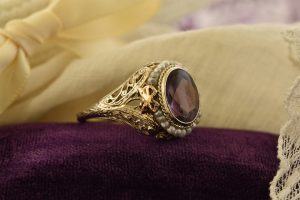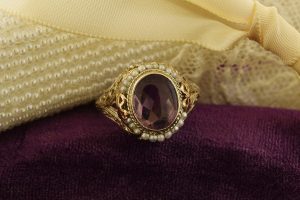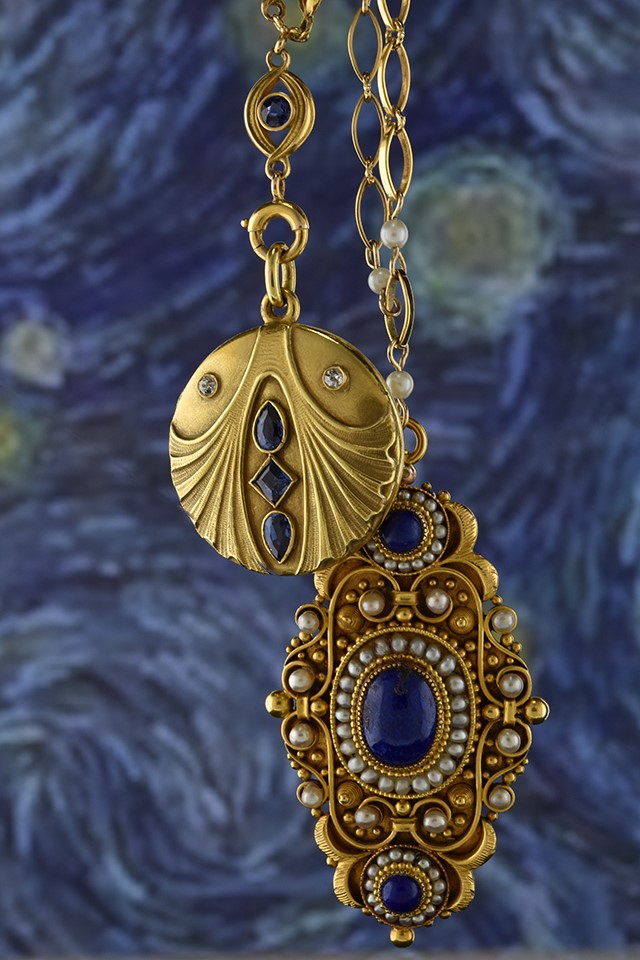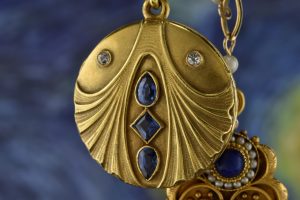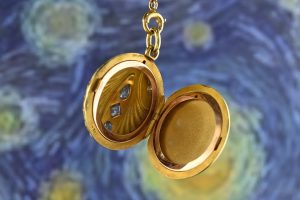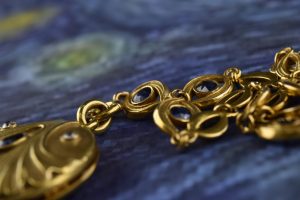Joden Girl
Baubles, Bling and Artisanal Things
Filigree is arguably the most popular element of vintage jewelry design. Customers often reminisce about how a particular example is just like their grandma’s ring – not just a sentimental memory but also a treasured heirloom. This time-intensive artform has been used for hundreds of years to craft everything from iron railings and lamps to fine jewelry.
There are two main types – openwork and metal supported. Often, these two styles are combined to create an even more interesting and beautiful design. This lovely late Edwardian ring is a stellar example. Filigree is achieved by stretching thin metal strips into threadlike wires. Each one is twisted, woven or coiled using heat to soften and manipulate it into the desired shape.
The best metal choices for filigree are platinum, 14-karat or lower karat gold. These sturdier metals are necessary to give strength to this delicate configuration. Heavier wire forms a structural framework of the ring. Smaller decorative wires are sculpted into ornamental scrolls. Every line is further enhanced with tiny milgrain beads that offer texture and visual appeal.
This process is completed over and over until the piece is complete. Bezel set in the center of this lace finery is one cabochon oval amethyst. A twisted-wire frame encapsulates the purple gem. Twenty-one tiny seed pearls have been carefully strung on a wire that also encircles and enhances the soft violet stone. The romantic feel of the ring is tied up in a small golden bow that crowns each shoulder. Made in or near 1915, this charming beauty is priced at just $675.00. It’s available in store or online – make it yours today.
“You can go to a museum and look, or come to us and touch.”
Written by Carrie Martin
Photos by Dana Jerpe

